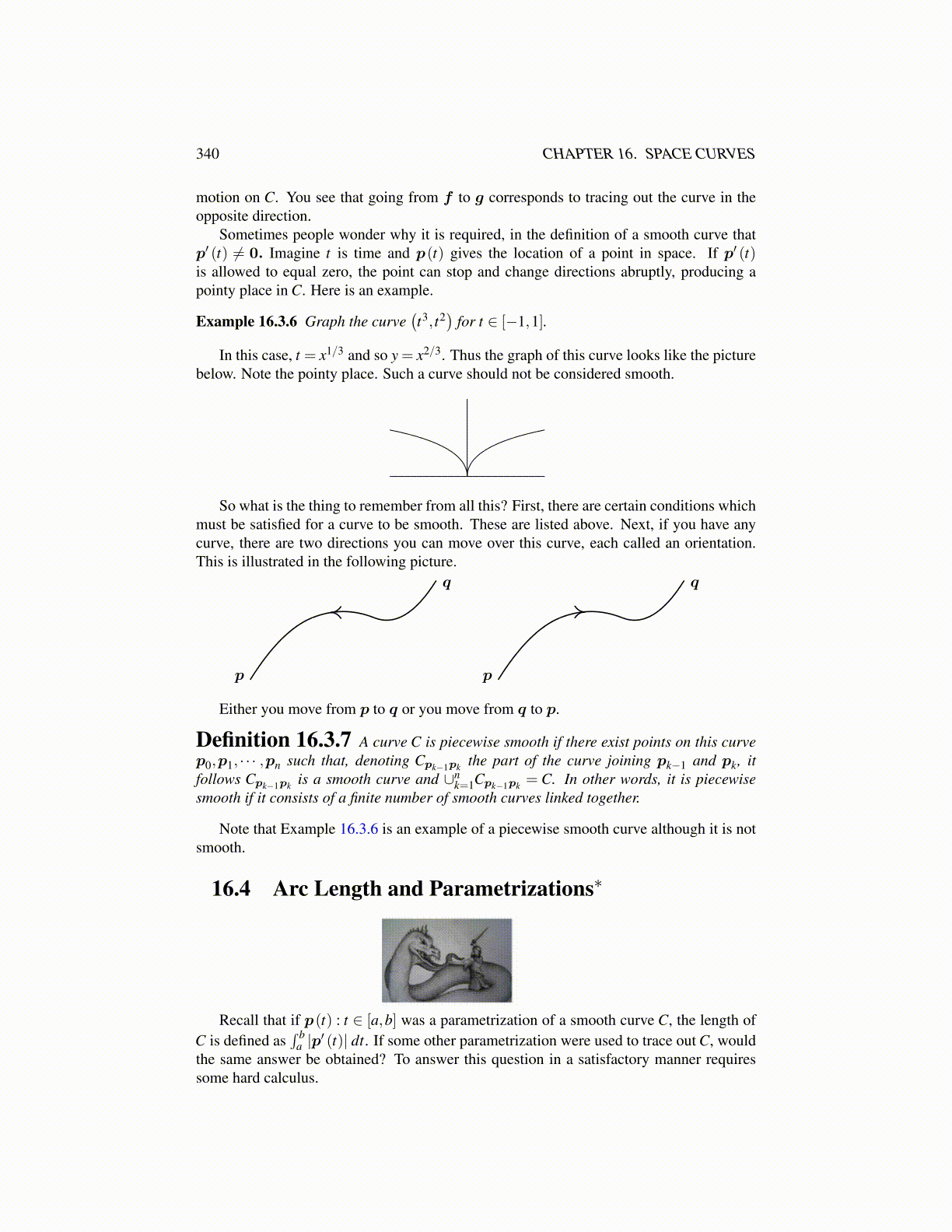
340 CHAPTER 16. SPACE CURVES
motion on C. You see that going from f to g corresponds to tracing out the curve in theopposite direction.
Sometimes people wonder why it is required, in the definition of a smooth curve thatp′ (t) ̸= 0. Imagine t is time and p(t) gives the location of a point in space. If p′ (t)is allowed to equal zero, the point can stop and change directions abruptly, producing apointy place in C. Here is an example.
Example 16.3.6 Graph the curve(t3, t2
)for t ∈ [−1,1].
In this case, t = x1/3 and so y = x2/3. Thus the graph of this curve looks like the picturebelow. Note the pointy place. Such a curve should not be considered smooth.
So what is the thing to remember from all this? First, there are certain conditions whichmust be satisfied for a curve to be smooth. These are listed above. Next, if you have anycurve, there are two directions you can move over this curve, each called an orientation.This is illustrated in the following picture.
p
q
p
q
Either you move from p to q or you move from q to p.
Definition 16.3.7 A curve C is piecewise smooth if there exist points on this curvep0,p1, · · · ,pn such that, denoting Cpk−1pk the part of the curve joining pk−1 and pk, itfollows Cpk−1pk is a smooth curve and ∪n
k=1Cpk−1pk = C. In other words, it is piecewisesmooth if it consists of a finite number of smooth curves linked together.
Note that Example 16.3.6 is an example of a piecewise smooth curve although it is notsmooth.
16.4 Arc Length and Parametrizations∗
Recall that if p(t) : t ∈ [a,b] was a parametrization of a smooth curve C, the length ofC is defined as
∫ ba |p′ (t)| dt. If some other parametrization were used to trace out C, would
the same answer be obtained? To answer this question in a satisfactory manner requiressome hard calculus.